The AMD Ryzen 7 5700G, Ryzen 5 5600G, and Ryzen 3 5300G Review
by Dr. Ian Cutress on August 4, 2021 1:45 PM ESTCPU Tests: Legacy and Web
In order to gather data to compare with older benchmarks, we are still keeping a number of tests under our ‘legacy’ section. This includes all the former major versions of CineBench (R15, R11.5, R10) as well as x264 HD 3.0 and the first very naïve version of 3DPM v2.1. We won’t be transferring the data over from the old testing into Bench, otherwise it would be populated with 200 CPUs with only one data point, so it will fill up as we test more CPUs like the others.
The other section here is our web tests.
Web Tests: Kraken, Octane, and Speedometer
Benchmarking using web tools is always a bit difficult. Browsers change almost daily, and the way the web is used changes even quicker. While there is some scope for advanced computational based benchmarks, most users care about responsiveness, which requires a strong back-end to work quickly to provide on the front-end. The benchmarks we chose for our web tests are essentially industry standards – at least once upon a time.
It should be noted that for each test, the browser is closed and re-opened a new with a fresh cache. We use a fixed Chromium version for our tests with the update capabilities removed to ensure consistency.
Mozilla Kraken 1.1
Kraken is a 2010 benchmark from Mozilla and does a series of JavaScript tests. These tests are a little more involved than previous tests, looking at artificial intelligence, audio manipulation, image manipulation, json parsing, and cryptographic functions. The benchmark starts with an initial download of data for the audio and imaging, and then runs through 10 times giving a timed result.
We loop through the 10-run test four times (so that’s a total of 40 runs), and average the four end-results. The result is given as time to complete the test, and we’re reaching a slow asymptotic limit with regards the highest IPC processors.

Sizeable single thread improvements.
Google Octane 2.0
Our second test is also JavaScript based, but uses a lot more variation of newer JS techniques, such as object-oriented programming, kernel simulation, object creation/destruction, garbage collection, array manipulations, compiler latency and code execution.
Octane was developed after the discontinuation of other tests, with the goal of being more web-like than previous tests. It has been a popular benchmark, making it an obvious target for optimizations in the JavaScript engines. Ultimately it was retired in early 2017 due to this, although it is still widely used as a tool to determine general CPU performance in a number of web tasks.
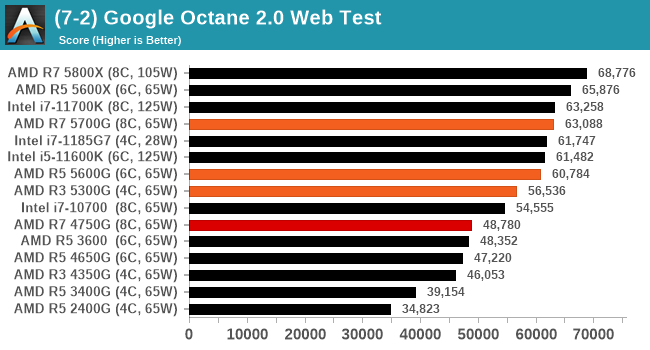
Speedometer 2: JavaScript Frameworks
Our newest web test is Speedometer 2, which is a test over a series of JavaScript frameworks to do three simple things: built a list, enable each item in the list, and remove the list. All the frameworks implement the same visual cues, but obviously apply them from different coding angles.
Our test goes through the list of frameworks, and produces a final score indicative of ‘rpm’, one of the benchmarks internal metrics.
We repeat over the benchmark for a dozen loops, taking the average of the last five.
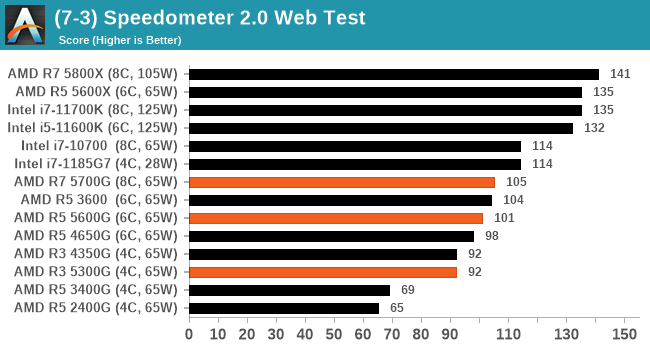
Legacy Tests
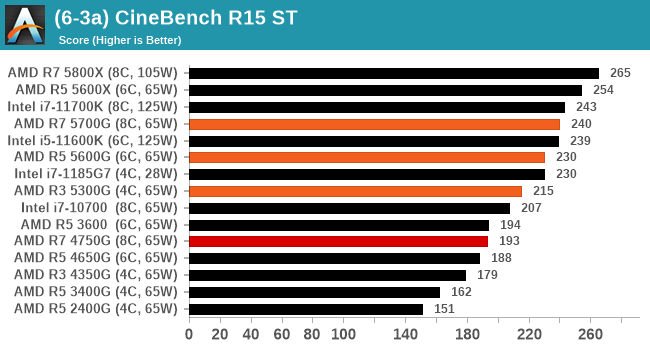
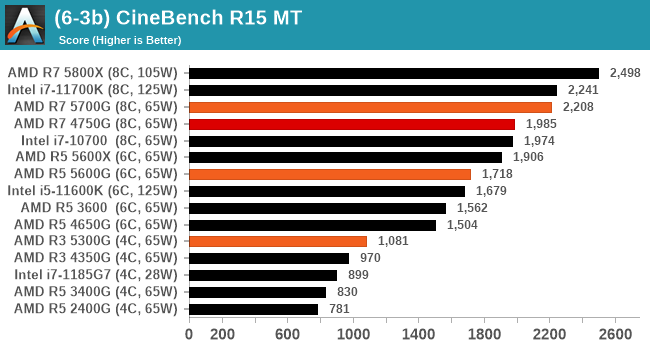
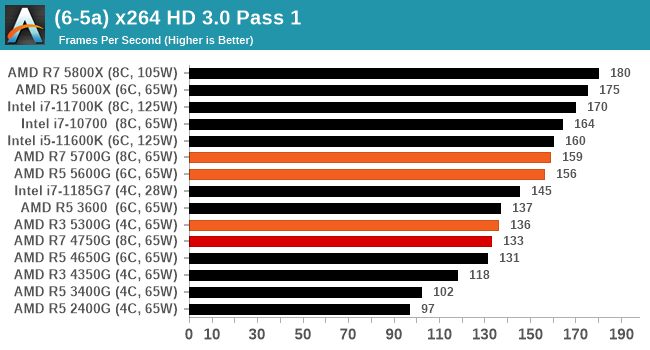
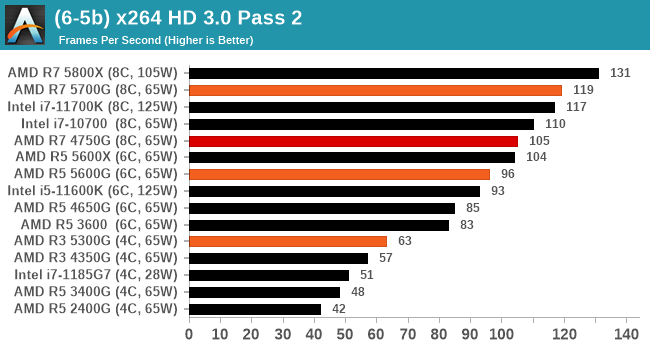

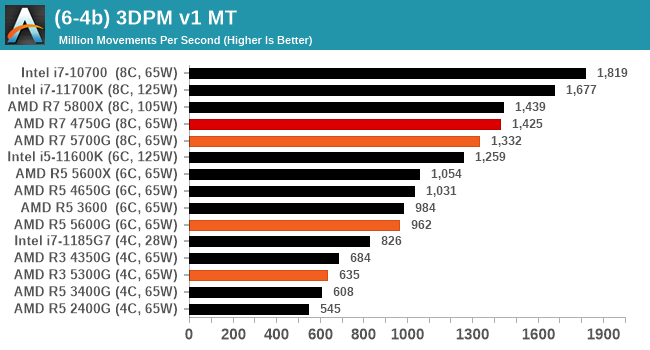


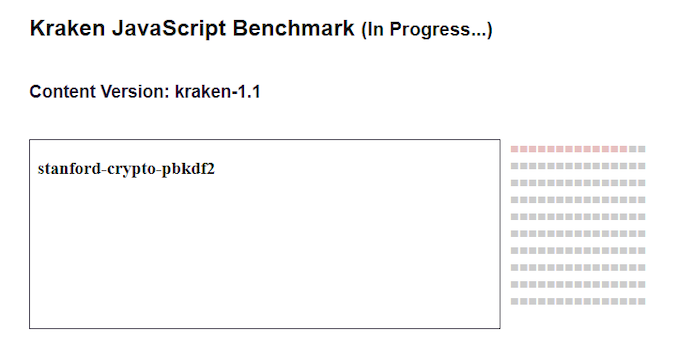
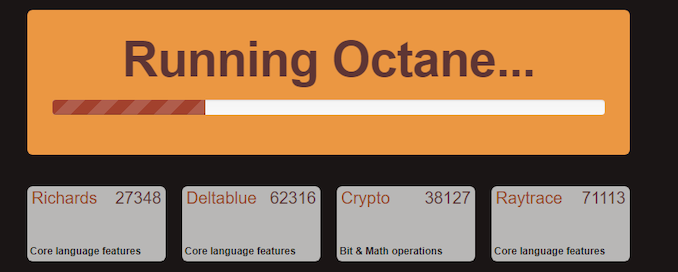
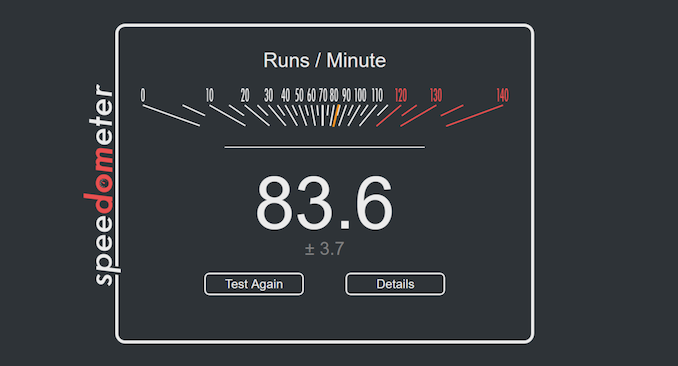








135 Comments
View All Comments
mode_13h - Thursday, August 5, 2021 - link
Thanks for the correction. That was a real head-scratcher!msroadkill612 - Thursday, August 5, 2021 - link
Under the table on p1"The top part is a Ryzen 7 5700G, featuring eight cores and sixteen threads, with a base frequency of 3.8 GHz and a turbo frequency of 4.6 GHz. The Vega 8 graphics runs at 2000 MHz, and we get 16 lanes of PCIe 3.0 for graphics, plus another four for storage."
Not so -AFAIK - all apus have 8 lanes for the graphics pcie slot.
anand made the same mistake on a previous apu review as i recall. its very misleading.
nanonan - Friday, August 6, 2021 - link
The 4000G series have 16 lanes and so do these, it was not misleading at all as far as I can tell.Fulljack - Friday, August 6, 2021 - link
nope, the connection to GPU were different according to the package. any APUs packaged on AM4 will have x16 PCIe 3.0 connection—always has been since Raven Ridge.for laptop, FP6 and previous package were limited to x8 PCIe 3.0 connection for the GPU.
pman6 - Thursday, August 5, 2021 - link
will have to wait for 6000G, since this has old ass graphics with no AV1 decoding support. Enjoy your choppy 4k/8k videonandnandnand - Thursday, August 5, 2021 - link
~2x graphics performance, AV1 decode, DDR5, PCIe 4.0, USB4, and possibly a Zen 3+ IPC increase.GreenReaper - Thursday, August 5, 2021 - link
Yeah... they're good CPUs, but not the one to get if you're buying something to use for the next decade.GeoffreyA - Thursday, August 5, 2021 - link
Possibly the best for AM4 folk that want an APU.GeoffreyA - Thursday, August 5, 2021 - link
Can't comment on 8K, but 4K runs smoothly even on an old 2200G.pman6 - Thursday, August 5, 2021 - link
not 4k60 AV1 it doesn't. Or it uses a lot of cpu resources